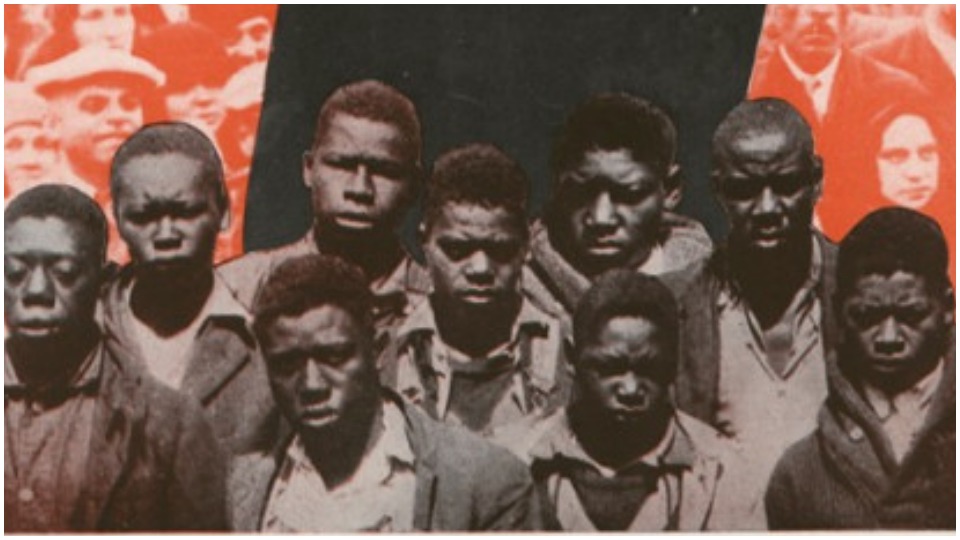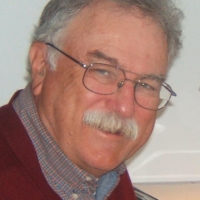
In the years 1991 to 2002, when I was editor of People’s Weekly World, I often consulted with Mary Licht, historian of the Communist Party USA, on questions of fact in the CPUSA’s long, eventful history.
Mary herself was a quiet, modest, slender woman never inclined to promote herself. But in the mid-1990s, Dr. Kwando Kinshasa, a professor at the John Jay College of Criminal Justice, visited our office in the Chelsea district of Manhattan to ask for our help in researching his soon to be published book, The Man From Scottsboro.
It was a book about the decades-long struggle first to save the lives of the Scottsboro Nine from execution and then to win their freedom from Alabama prisons. The African-American youths had been arrested and falsely charged with raping two white women aboard a freight train on March 25, 1931.
They were tried, and eight of the nine were given death sentences. The struggle to save the “Scottsboro Boys” exploded, mobilizing tens of millions here at home and around the world.
Dr. Kinshasa’s book focused on Clarence Norris, last survivor among the Scottsboro Nine, who served 19 years in prison, winning release only in 1976. He died at age 76 in 1989. He lived with his wife in the Bronx. I remember being present the day he and his wife visited party headquarters to thank the CPUSA for saving his life.
We gave Dr. Kinshasa all the help we could from our voluminous archives one floor down from our city room. Saul Schulman, our archivist, especially knew the rather chaotic state of our files and spent hours retrieving documents and photos for Kinshasa.
In the midst of all this, Mary Licht announced quietly, one day: “I knew the Scottsboro case first hand. I was deeply involved in the case.”
2019 marks a century since the founding of the Communist Party USA. To commemorate the anniversary of the oldest socialist organization in the United States, People’s World has launched the article series: 100 Years of the Communist Party USA. Read the other articles published in the series and check out the guidelines about how to submit your own contribution.
She then told us her story: She was living in Chattanooga, Tenn., in 1931, an organizer for the Unemployed Councils (UC) led by the Communist Party USA. The UC called for nationwide protest marches and rallies March 6, 1931, demanding enactment of the Lundeen Act that would provide unemployment compensation and Social Security for the tens of millions of workers who lost their jobs in the Great Depression.
Licht was arrested on charges of “sedition” for organizing the protest in Chattanooga, rallying African Americans and whites together, a capital offense in the segregated South.
Licht told us she was still in jail when she learned of the arrest of the Scottsboro Nine. They were youthful, Black unemployed hoboes riding the rails in search of work. “When I read about the conviction of the Scottsboro youth, I told my co-worker that when we were released, I would secure the International Labor Defense (ILD) for their case.” True to her word, after her release, she immediately visited Sherman Bell, revered as the “mayor” of the Black community of Chattanooga.
Together, they visited Mrs. Wright and Mrs. Patterson, mothers in Chattanooga of three of the Scottsboro Nine.

“We told them about how our trial had been conducted—a packed courtroom and a team of eloquent lawyers who believed in our program of equality for African-American people.
“We explained that the case of the Scottsboro Nine was not a case that could be won in a Southern courtroom. We said that a mass protest movement capable of rallying millions of people from around the world was required if there was to be a stay of the execution scheduled for July 10 [1931].”
The two mothers replied that the NAACP had visited that morning and would most likely return, also offering to defend their sons. But after 10 days, the mothers agreed that their sons should be represented by the ILD. Soon after, the other parents of the Scottsboro defendants agreed to ILD legal representation.
The ILD and the Communist Party USA made the Scottsboro case a “cause celebre,” organizing mass rallies, marches, and picketlines across the nation. The ILD organized speaking trips for the mothers across the nation and around the world. Many, many millions of people worldwide were mobilized to save the lives of the Scottsboro Nine and demand their freedom.
Decades later, in 1997, an NAACP spokesman, Denton L. Watson, wrote in the New York Times a vile red-baiting attack on the CPUSA charging that the hidden agenda of the Communists was “to organize blacks (sic) as a fifth column in the international struggle to undermine capitalism and to get the west to disarm…”
I wrote a rebuttal headlined “New York Times: Turning Truth on its Head—The Scottsboro Case.” It appeared in the Feb. 15, 1997, edition of the PWW.
But the strongest rebuttal came in that same edition of the PWW from Mary Licht. She wrote that her direct leadership role in the Scottsboro Nine’s defense “makes it possible for me to categorically deny Denton L. Watson’s crude lies about the role of the Communist Party in building the campaign to defend the Nine.”

She adds, “Our first—and only—goal was to save the lives of nine innocent young African-American youths. I’m proud that we accomplished that task and I had a role in it.”
Read Mary Licht’s first-hand account: I remember the Scottsboro defense
Licht continues that their frame-up “was a symbol of the inequality of the then 12 million African Americans in America. I believed that their trial was a legal lynching, that they had been framed up and sentenced to death under the pretext of ‘rape.’”
The militant defense of the Scottsboro Nine “became a catalyst that helped bring union organization to thousands of southern workers. Sharecroppers in Alabama and Arkansas joined the Sharecroppers Union while workers employed by Tennessee Coal and Iron mines in Harlan County joined unions and laid the basis for the CIO.”
It also laid the basis for the Civil Rights Revolution of the 1960s that pushed through the Civil Rights Act of 1964 and the Voting Rights Act of 1965. And the CPUSA used the organizing tactics learned in the Scottsboro Nine defense when it led the worldwide campaign to save Angela Davis.
In this centennial year of the CPUSA, we should celebrate Mary Licht as a courageous fighter for equality.










